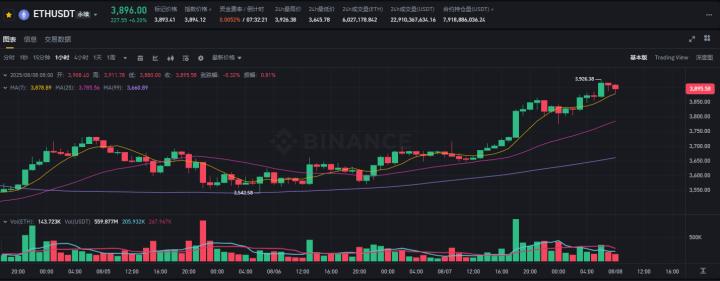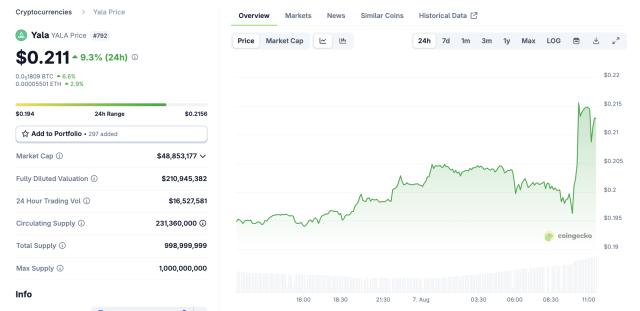Jessy, Jinse Finance
On Thursday, Trump issued an executive order to promote investment in alternative assets for retirement plans like 401(k), including private equity, crypto assets, and more.
Currently, 401(k) plans manage assets worth $9 trillion, with over 90 million Americans using the plan. Previously, these plans primarily invested in low-risk assets such as government bonds and mutual funds.
Market estimates suggest that if 401(k) plans allocate just 2% of their assets to cryptocurrencies, it would mean approximately $170 billion in new capital inflow - equivalent to two-thirds of the existing crypto spot ETF and listed reserve market value.
Meanwhile, the Supreme People's Court in China issued a judicial interpretation on August 1st, clearly stating that any private agreements between employees and employers to avoid social insurance contributions are invalid, and will strictly enforce new regulations from September 1st, holding non-compliant employers accountable and imposing fines.
The policy directions of China and the US differ, but both aim to address pressures on their pension systems.
Jinse Finance will subsequently provide a detailed analysis of the background of alternative assets entering 401(k) in the US, potential impacts on the crypto industry, and a comparison of different practices in China and the US facing pension challenges.
US Pension Dilemma: Why Do 401(k) Plans Need Alternative Assets?
In the US retirement security system, while social security (federal retirement funds) provides a basic foundation, it generally only covers basic living expenses. Many middle-class families rely on supplementary pension plans like 401(k) to support their retirement quality of life.
A 401(k) is a long-term retirement savings account opened by US employers for employees, offering tax benefits. Employees can defer taxes on a portion of their wages, directly investing in this account, to be withdrawn upon retirement. Employers provide an investment list (typically 20-30 funds), and employees decide how much of their salary to contribute (e.g., 6%) and select funds and allocation ratios. Wages are automatically deducted, and employers usually provide additional matching - for example, matching half of the employee's contribution as a benefit.
401(k), as an employer-provided, employee-voluntary account with tax-deferred benefits, was once considered an important means of personal retirement wealth accumulation.
However, the reality is concerning. The latest survey shows that due to inflation and rising medical expenses, only about one-third of 401(k) participants still believe they can achieve their retirement goals, down from 43% last year. Simultaneously, state and local public pensions face trillions of dollars in unfunded gaps. For instance, state-level pension systems have committed to paying $6.3 trillion in pensions but only have $4.9 trillion in actual assets, creating a gap of nearly $1.4 trillion.
In this context, Trump's push to introduce alternative assets becomes clearer - in a low-interest-rate and inflationary environment, traditional investments struggle to generate returns, forcing policy shifts towards "higher-return assets". Alternative assets (such as private equity, real estate, cryptocurrencies) may have higher risks but attract more pension managers with their potential returns and asset diversification capabilities. For example, California Public Employees' Retirement System (CalPERS) plans to add over $30 billion in private market investments, with public pension alternative asset allocation increasing from 14% in 2001 to nearly 40% in 2021.
By breaking regulatory barriers through executive orders and allowing 401(k) participants to choose more diverse and potentially higher-yielding assets, policy supporters view this as "democratizing financial opportunities".
Money Not Immediately Flowing to Crypto Assets
Previously, crypto assets were not included in 401(k) investment lists, and this policy first opens the door. Some argue that even if 401(k) allocates just 2% of spare funds, the crypto market could immediately gain $170 billion - almost two-thirds of existing crypto spot ETF and listed reserve total market value.
However, these funds are not expected to immediately enter the crypto market, with an estimated implementation cycle of six months to two years. First, the Department of Labor will issue detailed rules clarifying alternative asset investment in 401(k), including proportion limits and product disclosures. Then, service providers will design fund products compliant with these rules, incorporating crypto assets. Finally, employers will decide whether to add these new funds to investment menus, and employees will choose whether to allocate funds. Crypto spot ETFs are most likely to be included due to their regulated status and high liquidity.
Critics warn that most alternative assets have issues like poor liquidity, high fees, low transparency, valuation difficulties, and slow market exit, potentially introducing systemic risks, especially when economic downturns make it difficult for investors to quickly retrieve funds. Additionally, whether the regulatory framework's fiduciary assessment standards can effectively protect ordinary investors remains a current point of public debate.
China and US Pension Systems: "Three Pillars" with Significant Structural Differences
Pension issues are a global challenge. As the US announces alternative assets entering 401(k), China has also adjusted social insurance policies.
On August 1st, the Supreme People's Court issued a judicial interpretation invalidating any "private agreements" refusing social insurance contributions, with strict enforcement of employer responsibilities starting September 1st. This not only protects individual rights but also ensures stable pension resource inflow from the policy source.
China's pension system adopts a government-led, centralized structure, establishing funding pools through mandatory contributions and centralized management and payment. Facing challenges like aging population and local fiscal pressures, "expanding funding sources" has become a key strategy.
China's policy intention is clear: use legal enforcement mechanisms to repair institutional gaps, ensure accurate and sufficient contribution bases, and enhance fund pool size to address potential demographic structure challenges.
Both the US and China follow a "three-pillar" pension model, with government, enterprises, and individuals sharing responsibilities - government-led mandatory pensions, enterprise supplementary pensions, and personal retirement savings.
However, the funding scale of these three pillars differs significantly. In the US, the second and third pillars (401k and IRA) are massive and a crucial capital market funding source. In China, the first pillar is largest, with second and third pillars relatively smaller. Moreover, in the US, individuals typically have greater investment choice in the second and third pillars, can determine investment portfolios, and these have become the primary pension source. In China, individual investment autonomy is more limited, especially in corporate annuities.
Perhaps due to different funding proportion and development stages, China and the US have different policy directions addressing pension challenges: Trump seeks to enhance individual choice and investment range in the third pillar, while China aims to ensure the stability of the first pillar's funding pool.
Compared to the US reliance on market-driven returns, China focuses more on system stability and sustainability. This reflects underlying institutional differences: China emphasizes social security and fairness, with state-led management; the US leans towards market mechanisms and individual choice.
The US emphasizes investment freedom and personal responsibility, while China focuses on institutional rigidity and collective protection. Facing this global pension challenge, they offer different solutions.








